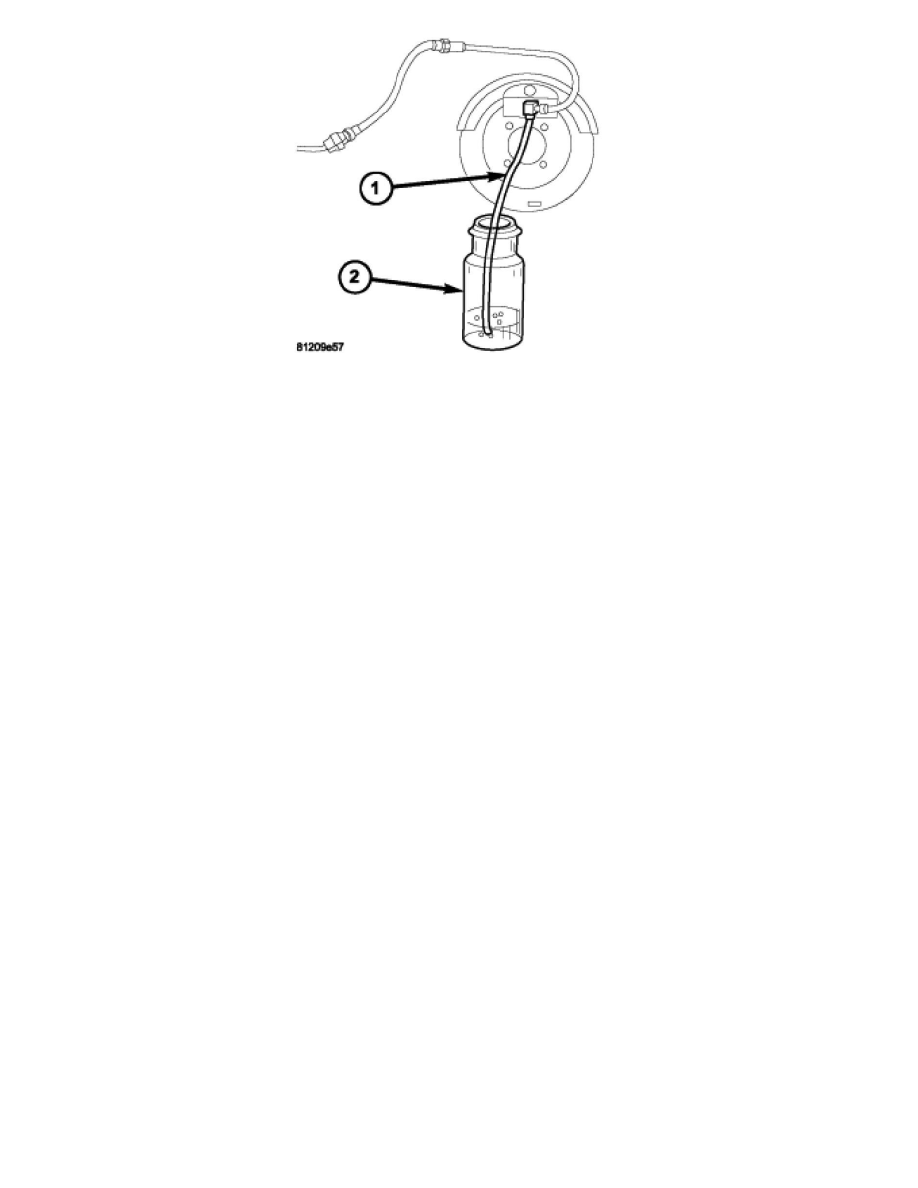Magnum V8-5.7L VIN 2 (2007)

16. If installed, remove rubber dust cap from bleeder screw on each front brake caliper.
17. Starting at the first wheel circuit that needs to be bled (See list in above note), attach a clear hose (1) to the bleeder screw at one wheel and feed the
other end of the hose into a clear jar (2) containing fresh brake fluid.
18. Have an assistant pump the brake pedal three or four times and hold it down before the bleeder screw is opened.
CAUTION: Open the bleeder screw at least one full turn when instructed. Some air may be trapped in the brake lines or valves far
upstream, as far as ten feet or more from the bleeder screw. If the bleeder screw is not opened sufficiently, fluid flow is restricted causing
a slow, weak fluid discharge. This will NOT get all the air out. Therefore, it is essential to open the bleeder screw at least one full turn to
allow a fast, large volume discharge of brake fluid.
19. While the pedal is being held down, open the bleeder screw at least one full turn. When the bleeder screw opens the brake pedal will drop all the
way to the floor. Continue to hold the pedal all the way down.
20. Once the brake pedal has dropped, close the bleeder screw. The pedal can then be released.
21. Repeat steps One through Five until all trapped air is removed from that wheel circuit (usually four or five times). This should pass a sufficient
amount of fluid to expel all the trapped air from the brakes hydraulic system. Be sure to monitor brake fluid level in master cylinder fluid reservoir
making sure it stays at a proper level. This will ensure air does not reenter brake hydraulic system through master cylinder.
NOTE: Monitor the brake fluid level in the fluid reservoir periodically to make sure it does not go too low. This will ensure that air does
not reenter the brake hydraulic system.
22. Install bleeder screw dust cap.
23. Bleed opposite front brake wheel circuit as necessary in the same manner until all air is removed from the brake hydraulic system.
24. If equipped with antilock brakes, the hydraulic control unit may need to be bled, then rebleed base brakes.
25. Once all brakes are bled, check brake pedal travel. If pedal travel is excessive or has not improved, some air may still be trapped in the hydraulic
system. Rebleed the brake system as necessary.
26. Test drive vehicle to ensure brakes are operating properly and pedal feel is correct.
